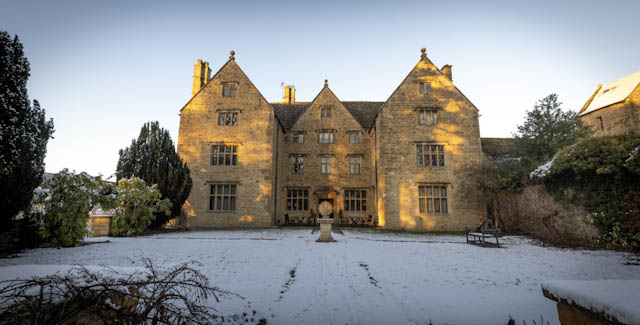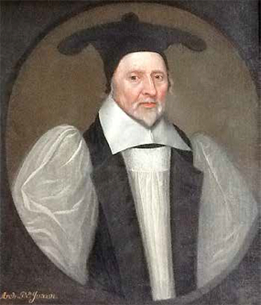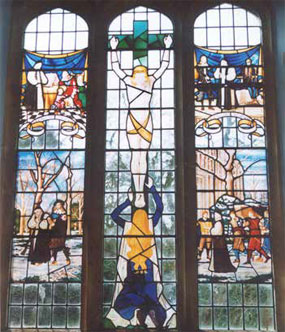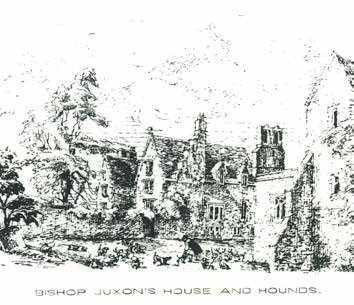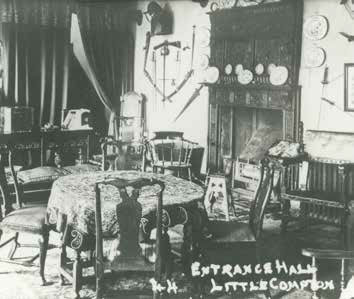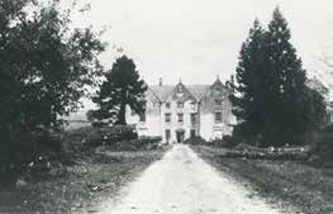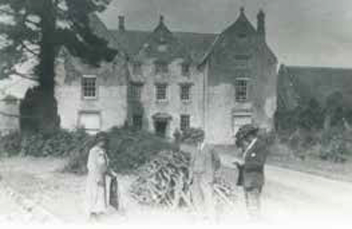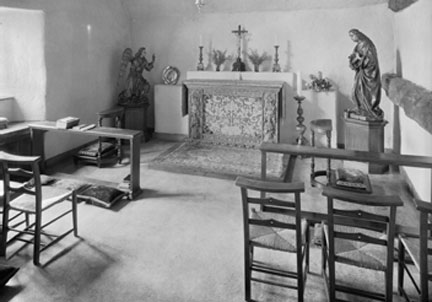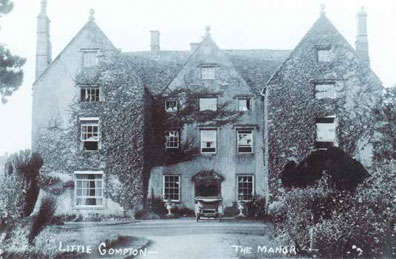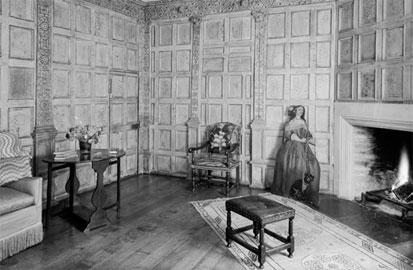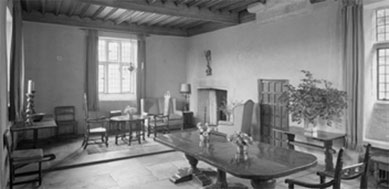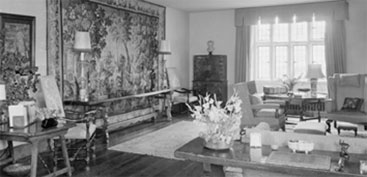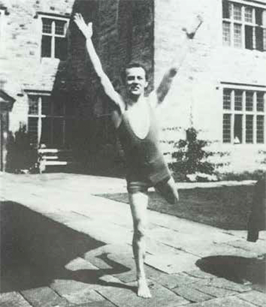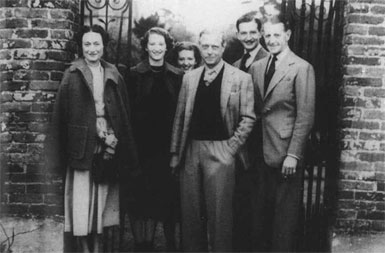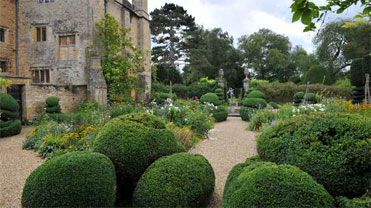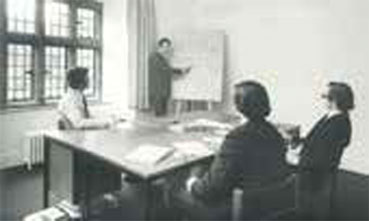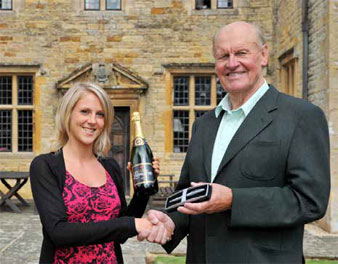History of The Manor
We take a journey through time from the early years of The Manor and its inhabitants through to the present day, where since 1972 it has become the hallmark image of the Reed Business School, a world class tuition provider.
Using the timeline below, discover the fascinating story behind one of the Cotswolds most iconic buildings.
11th Century
The story begins
The recorded history of The Manor, Little Compton begins in the 11th Century, but it is likely that the village had already existed three or four centuries by this time. In 1056 King Edward the Confessor re-founded the nearby monastery at Deerhurst as a priory dependent on the great abbey of St Denys near Paris, where many of the French kings are buried.
1539
The dissolution of the monasteries
In 1539, following the dissolution of the monasteries, The Manor passed into private ownership, its first owner being Sir Thomas Pope, the founder of Trinity College, Oxford who acquired the Manor in 1546/7. In 1641 The Manor was bought by the Juxon family and in 1644 passed to William Juxon, Bishop of London.
1582
William Juxon
William Juxon was born in 1582. He studied at Oxford and became a Law student of Gray’s Inn in 1603 but then decided to change his Law studies for the Church and took Holy Orders and became Vicar of St Giles, Oxford at the age of 27.
1625
William Juxon
At the age of 37 he was elected president of St John’s College, Oxford and directed the early stages of building the library and rooms of that College. In the early days of the reign of Charles I, Juxon became Dean of Worcester and soon after the accession of Charles I in 1625 Juxon was appointed chaplain to the King.
1632
William Juxon
In 1632 he was made Clerk of the King’s Closet and then a year later he became Dean of the Chapel. This was the start of a long and close association with King Charles I and in 1632 he became Bishop of London and Lord Treasurer of England. As the Civil War drew near, he took the political decision to resign as Lord Treasurer. Juxon was a prominent figure during the Civil War and at the bequest of the King, during the King’s trial he voluntarily surrendered himself to arrest to share the King’s captivity and after the sentence of death, he rarely left the King.
1632
St Denys' church
He shared the last hours of the King and accompanied him to the scaffold in Whitehall for the King’s execution. His body was taken to Windsor where his body was embalmed under the direction of Bishop Juxon. A stained glass window in St Denys’ church adjacent to The Manor depicts four scenes representing Juxon’s role at the execution. The window was crafted by Mr Hugh Easton and commissioned in the 1920’s by Mrs Leverton Harris, a subsequent owner of The Manor.
The Civil War
Little Compton
After the execution of the King, Juxon kept a low profile and spent a lot of time at Little Compton where he had his own pack of hounds and was a keen huntsman. It is probable that he hunted deer and the small deer park within the grounds, which is still present today, dates back to this time.
Juxon Coat of Arms
Cromwell
There is a story, that some of Juxon’s Puritan neighbours, were keen to tell tales to Cromwell to stir up trouble. An occasion arose when Juxon’s hounds ran through Chipping Norton Churchyard during a time of public worship providing an opportunity to lodge a complaint to Cromwell. Upon receipt of this news Cromwell responded “Pray, do you think that the Bishop prevailed on the hare to run through the Churchyard at that time?”, the messenger responded “No and please your Highness, I did not directly say he did but through the holy ground the hare did go at that time”, Cromwell dismissed him “Get you gone, and let me hear no such frivolous complaints; while the Bishop continues not to give my government any offence, let him enjoy his diversion of hunting unmolested”.
Juxon
Juxon lived his retirement at The Manor, deprived of his position of Bishop and took no part in public affairs. He did not worship at the adjacent Church, St Denys’ as this was held by a Puritan instead he walked every Sunday to the adjacent village Chastleton, with its Manor House owned by a loyalist, where he regularly performed divine services. (The National Trust now own Chastleton House where the bible used by Juxon at the King’s execution is on display).
1719
Sir William Juxon
The property then passed to a nephew Sir William Juxon, baronet and in 1719 to his son of the same name who died in 1740 leaving a young widow who married again (to Viscount Fane) and survived until 1792.
1812
Sir Robert Hesketh
The Manor was then inherited by Sir Robert Hesketh, Baronet, who sold it to Michael Corgan a banker at Chipping Norton. In 1812 the banker became bankrupt and The Manor was sold to William Harbidge. He and his son occupied The Manor for most of the 19th Century.
1921
Leonard Lane Yelf
In the 20th century The Manor was inherited by Leonard Lane Yelf and changed hands to Captain Henderson before it was bought by Frank Hawes.
1927
Major Freer
The house was then sold to Major Freer who then sold to Mrs Leverton Harris.
1928
Fire Destruction
Shortly after Mrs Leverton Harris bought The Manor, a serious fire broke out on Christmas Eve in 1928 spreading through the building destroying the centre and west wing of The Manor. Thankfully nobody was injured however all the decoration that was of Juxon’s time was destroyed with the exception of the small panelled ground floor parlour. The panelling dates back to circa 1620 and the room today is used as an office.
1930's
Reconstruction
Following the devastation of the fire, Mrs Leverton Harris reinstated the mullion windows and reconstructed the interior. The following internal images are from an article that was published in Country Life magazine from July 1939.
1930's
Landscape
In addition to the refurbishment of The Manor, throughout the 1930s the grounds were landscaped into the formal design that you see today.
A national treasure visits the manor
Sir John Betjeman
Sir John Betjeman, the most popular Poet Laureate was an undergraduate at Magdalen College, Oxford in 1925. During his time at Oxford he became friends with John Dugdale and the two of them spent a lot of time at Sezincote, which is a nearby estate close to Moreton in Marsh.
A national treasure visits the manor
Camilla Russell
Whilst holidaying and weekending at Sezincote, Sir John met Camilla Russell, great niece of Leverton Harris, who lived in Little Compton whom he was engaged to for a short period of time. Camilla’s father, Russell Pasha, insisted that the engagement be broken off after he discovered a copy of James Hanley’s novel Boy which John had sent her.
1938
A Royal Connection
When Mrs Leverton Harris died in 1938, The Manor was bought in 1939 by Sir Edward ‘Fruity’ and Lady Alexandra Metcalfe, daughter of Lord Curzon, Viceroy of India. Lady Alexandra hosted house parties at The Manor, attended by the high society of the 1930s. Her guests included Oswald Mosley, the founder of the British Union of Fascists before World War II and was her brother in law.
1948
The Prince of Wales
The Prince of Wales, who was crowned King Edward VIII before abdicating from the throne in 1936, was a close friend to Sir Edward Metcalfe who acted as ADC to the Prince. Both the Prince and Mrs Simpson were guests who stayed at The Manor.
1948
More recently
In 1948 The Manor was bought by Mrs Dermot Daly, the widow of Captain Singer, of the Singer Sewing machine family, who was killed in the war. The formal gardens matured and flourished over time and were fortunate enough to be under the tender care of Joe Meredith, Head Gardener of The Manor grounds between 1955 – 1991. Joe dedicated his life to horticulture and was very involved with local garden organisations. A life size sculpture of Joe can be seen watering the plants in the herbaceous borders during Spring Autumn.
1948
Joe
A Handkerchief tree has been planted in the orchard in memory of Joe for his dedicated services to The Manor grounds we see today.
1972
Sir Alec Reed
Sir Alec Reed bought The Manor in 1972 following an ambition of wanting to own a farm. Sir Alec and his young family spent a short period of time living in the house before it was opened as a residential accountancy college and named Reed College of Accountancy.
1972
The College
The first course the College ran had just three students! The Chartered accountancy courses for the examinations in the 1970s were run as eight week crammer style courses with lectures running for 12 day continuous stretches commencing from 9am going through to 10pm at night.
1972
ACA Final Part II
These students were studying toward their ACA Final Part II qualification comprising of 5 subjects taken at the same time (and they needed to succeed in all 5 papers at the same sitting to meet the pass criteria). Thankfully this style of intensive last minute approach has been refined with students today being taught over much longer periods and qualifications examined in a modular format.
1972
Guaranteed pass
Subsequent student numbers rapidly increased with the innovative idea of a ‘guaranteed pass option’. The founder tutors Ken Preece and Lawrie Drury went on to develop the range and number of accountancy qualifications which continue to be run today from the Business School.
1980
Reed Business School
Reed Educational Trust, a registered charity, was formed in the late 1980’s and Reed College changed its name to Reed Business School which is now the trading arm of the Trust. All the profits from the Business School are covenanted up to the Trust donating funds to many charities which all have links to the enhancement of learning and education.
1980
The Business School boasts impressive examination pass rates in the three main accountancy qualifications and has helped create thousands of qualified professionals over the 40 plus years it has been a tuition provider.
1980
Many students have achieved national prizes and all results are routinely published providing a full history of exam rate success.
1980
Some of the students who studied at The Manor in its former years are now partners in firms who are responsible for trainee accountants. Many of these alumni’s choose the Business School as their accountancy training provider based upon their own unique experience of having studied here at the start of their career achieving exam success.
In addition to the professional accountancy courses, the Reed Recruitment group host their residential management training courses at The Manor. The mix of students provide a vibrant environment dedicated to learning and development. The residential facilities comprise of The Manor and ten separate properties providing accommodation for up to 95 people.
Today
Stella Shaw
The Business School is currently managed by a small team working at The Manor. See ‘Meet the Team’ tab to find out more.
We receive more comments on our feedback forms on how marvellous the food is over all other categories within our feedback questions! Richard Sutton, our head gardener and his team, continue to make improvements and maintain the beautiful grounds which are available to all our students for enjoyment and relaxation.
The gardens are open to the public on an annual basis which is a very popular event whilst raising funds for charity. The remaining team include established and experienced tutors, administration team and housekeeping staff whom all play essential roles as guardians to The Manor, the grounds and its success for future generations to come.
